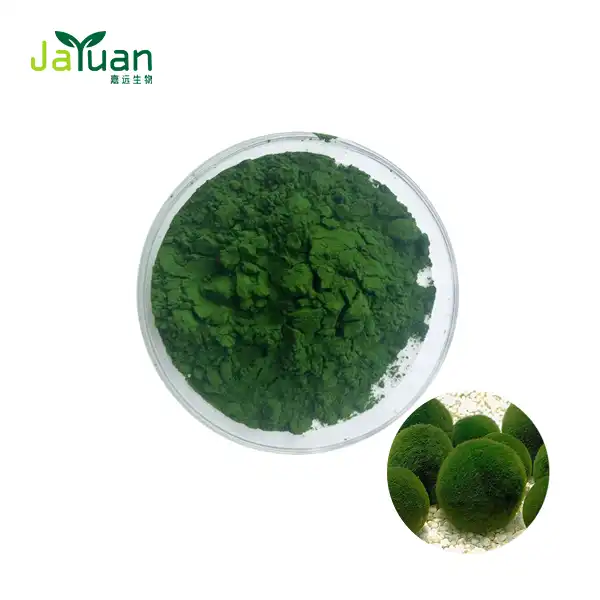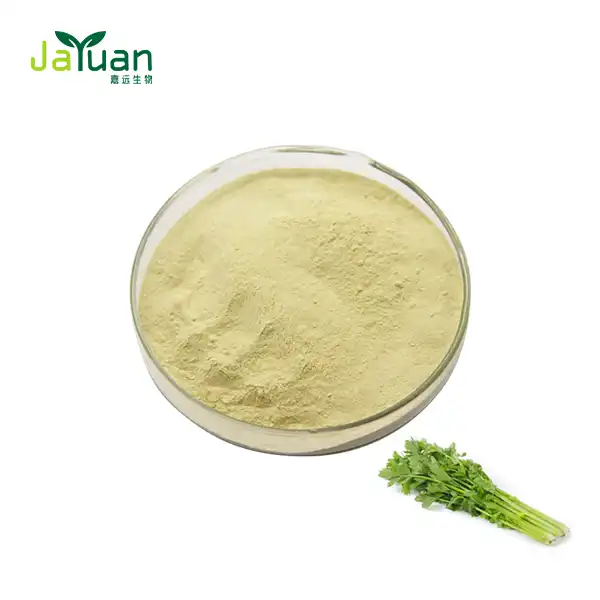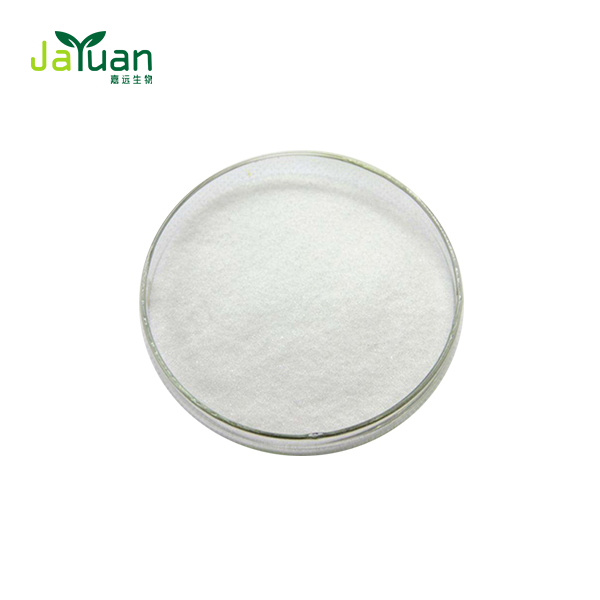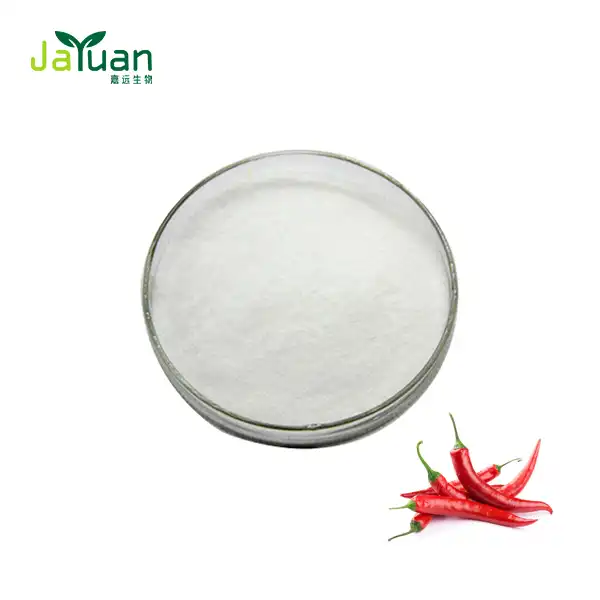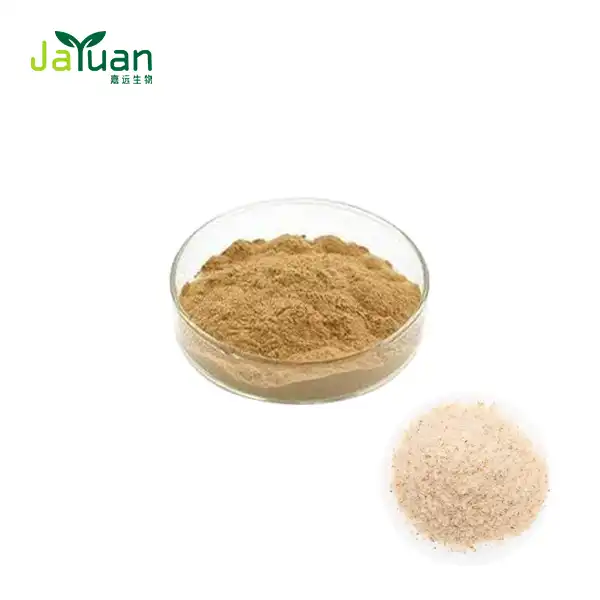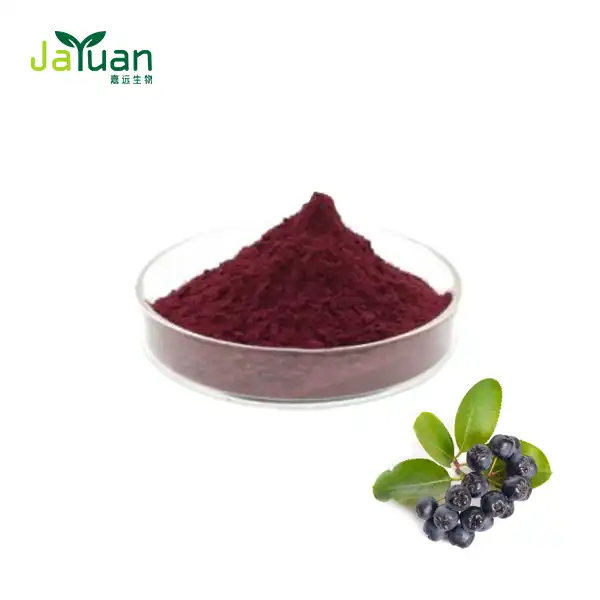What is the source of Matrine?
Matrine, a fascinating alkaloid compound, has been capturing the attention of researchers and health enthusiasts alike. But have you ever wondered where this powerful substance comes from? In this article, we'll explore the origins of matrine, its traditional uses, and the modern applications of matrine powder. Let's embark on a journey to uncover the secrets of this intriguing natural compound!

The Natural Origins of Matrine
Matrine is primarily derived from plants belonging to the Sophora genus, which is part of the legume family (Fabaceae). These plants are native to various regions across Asia, particularly in China. The most common sources of matrine include:
- Sophora flavescens: Also known as "Ku Shen" in Traditional Chinese Medicine (TCM), this is the primary source of matrine.
- Sophora alopecuroides: Another important source, sometimes referred to as "Ku Dou Zi" in TCM.
- Sophora subprostrata: A lesser-known but still valuable source of matrine.
These plants have been used for centuries in traditional medicine practices, particularly in China, Japan, and Korea. The roots of Sophora flavescens, for instance, have been a staple in TCM for over 2,000 years, prized for their diverse therapeutic properties.
Matrine is not exclusive to Sophora species, however. It can also be found in smaller quantities in other plants, such as:
- Sophora tonkinensis
- Sophora moorcroftiana
- Some species of the Lupinus genus
The concentration of matrine can vary significantly depending on the plant species, growing conditions, and the part of the plant used. This variation underscores the importance of proper sourcing and extraction methods in the production of high-quality matrine powder.
Traditional Uses and Modern Applications of Matrine
Matrine has a rich history of use in traditional medicine, particularly in TCM. Some of the traditional applications include:
- Treating skin conditions like eczema and psoriasis
- Alleviating digestive issues
- Managing fever and inflammation
- Supporting liver health
- Addressing respiratory problems
In recent years, scientific research has begun to shed light on the potential benefits of matrine, leading to increased interest in it as a supplement and potential therapeutic agent. Some areas of modern research include:
- Anti-cancer properties: Studies suggest that matrine may have potential in inhibiting the growth and spread of certain cancer cells.
- Anti-inflammatory effects: Researchers are exploring matrine's ability to reduce inflammation in various conditions.
- Liver protection: Some studies indicate that matrine might help protect the liver from damage and support its function.
- Cardiovascular health: Preliminary research suggests potential benefits for heart health.
- Neuroprotective effects: Studies are investigating matrine's potential role in protecting brain cells.
It's important to note that while these areas of research are promising, more studies are needed to fully understand the effects and proper use of matrine in modern medicine. Always consult with a healthcare professional before using pure matrine powder or any new supplement.

Extraction and Production of Matrine Powder
The process of obtaining matrine powder from its natural sources involves several steps:
- Harvesting: The plants, typically Sophora flavescens or other Sophora species, are harvested at the optimal time to ensure maximum matrine content.
- Drying: The plant material, usually the roots, is carefully dried to preserve the active compounds.
- Extraction: Various methods can be used to extract matrine from the plant material, including:
- Solvent extraction
- Supercritical fluid extraction
- Microwave-assisted extraction
- Purification: The extract undergoes purification processes to isolate matrine and remove impurities.
- Drying and powdering: The purified matrine is then dried and ground into a fine powder.
The quality of it can vary significantly based on the source of the raw materials, the extraction method used, and the overall manufacturing process. High-quality matrine powder should have a standardized concentration of matrine and be free from contaminants.
When choosing a matrine powder product, it's essential to look for reputable manufacturers who use good manufacturing practices (GMP) and provide third-party testing results. This ensures that you're getting a pure, potent, and safe product.
Some factors to consider when evaluating matrine powder include:
- Purity: The percentage of matrine in the powder
- Source: The specific plant species and part used
- Extraction method: How the matrine was obtained from the plant material
- Third-party testing: Independent verification of quality and purity
- Manufacturing standards: Adherence to GMP and other quality control measures
As research into matrine continues to evolve, we may see new and improved methods for extracting and purifying this compound, potentially leading to even higher quality pure matrine powder products in the future.
Conclusion
Matrine, sourced primarily from Sophora plants, is a fascinating alkaloid with a long history of use in traditional medicine and growing interest in modern research. From its natural origins in Asian flora to its extraction and transformation into it, this compound continues to intrigue scientists and health enthusiasts alike.
As we've explored, matrine's potential applications span a wide range of health areas, from cancer research to liver protection. However, it's crucial to approach its use with caution and under professional guidance, as research is still ongoing.
The production of high-quality matrine powder involves careful sourcing, extraction, and purification processes. As consumers, it's essential to choose products from reputable manufacturers who prioritize quality and safety.
As research into matrine progresses, we may uncover even more exciting potential uses for this natural compound. Whether you're a researcher, healthcare professional, or simply someone interested in natural health solutions, keeping an eye on developments in matrine research could prove fascinating and potentially beneficial.
If you're interested in learning more about matrine powder or other plant extracts, don't hesitate to reach out to experts in the field. For more information or inquiries about high-quality plant extracts, you can contact us at sales@jayuanbio.com.
References
- Liu, Y., Xu, Y., Ji, W., Li, X., Sun, B., Gao, Q., & Su, C. (2014). Anti-tumor activities of matrine and oxymatrine: literature review. Tumour biology : the journal of the International Society for Oncodevelopmental Biology and Medicine, 35(6), 5111–5119.
- Zhang, B., Liu, Z. Y., Li, Y. Y., Luo, Y., Liu, M. L., Dong, H. Y., Wang, Y. X., Liu, Y., Zhao, P. T., Jin, F. G., & Li, Z. C. (2011). Antiinflammatory effects of matrine in LPS-induced acute lung injury in mice. European journal of pharmaceutical sciences : official journal of the European Federation for Pharmaceutical Sciences, 44(5), 573–579.
- Kan, Q. C., Zhu, L., Liu, N., & Zhang, G. X. (2013). Matrine regulates glutamate-related excitotoxic factors in experimental autoimmune encephalomyelitis. Neuroscience letters, 560, 92–97.
- Long, Y., Lin, X. T., Zeng, K. L., & Zhang, L. (2004). Efficacy of intramuscular matrine in the treatment of chronic hepatitis B. Hepatobiliary & pancreatic diseases international : HBPD INT, 3(1), 69–72.
- Zhou, Y. J., Guo, Y. J., Yang, X. L., & Ou, Z. L. (2018). Anti-Cervical Cancer Role of Matrine, Oxymatrine and Sophora Flavescens Alkaloid Gels and Its Mechanism. Journal of Cancer, 9(8), 1357–1364.

